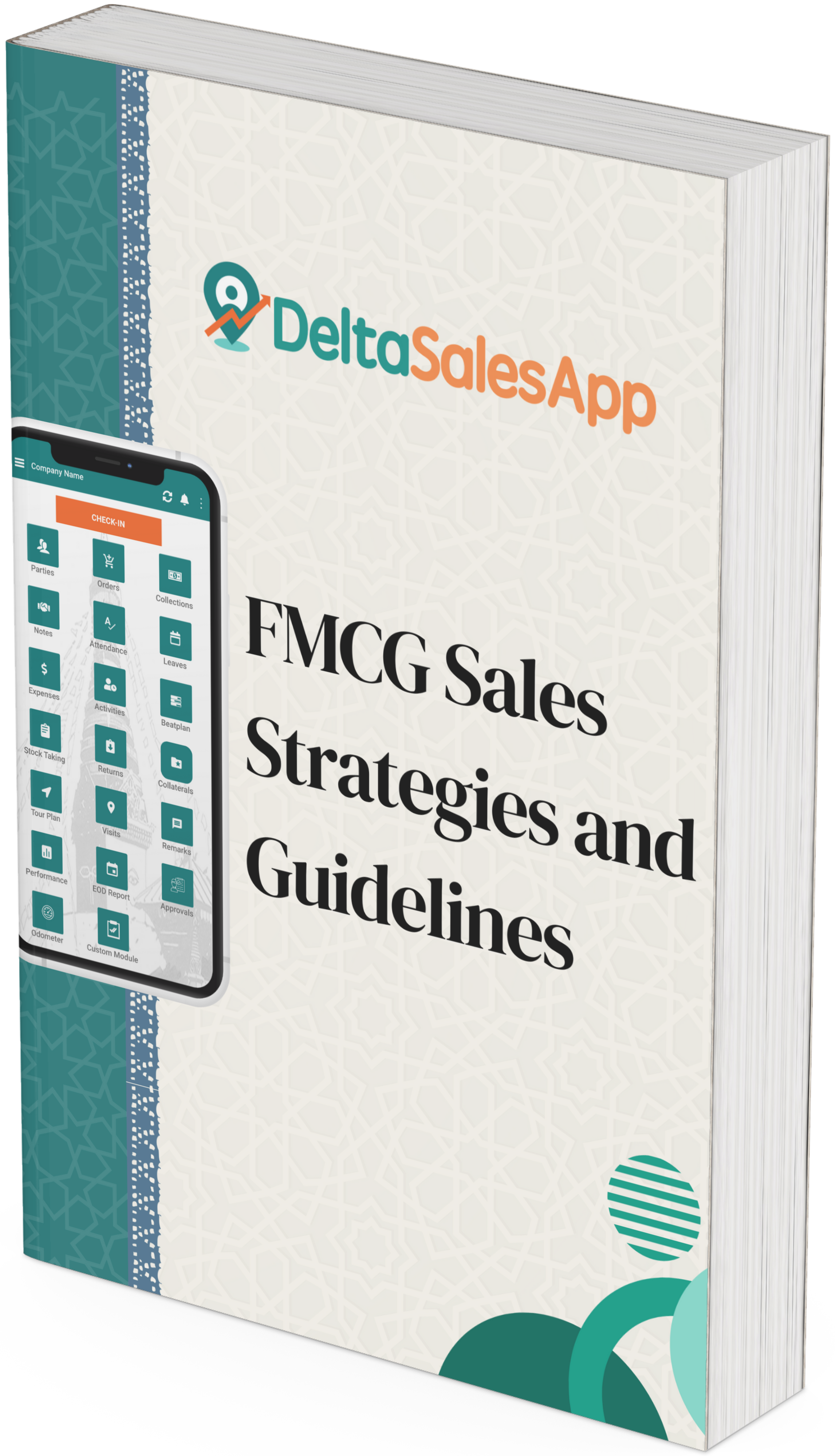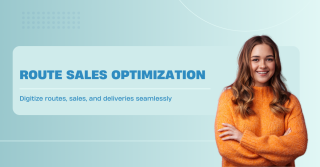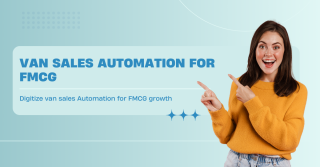Smart CPG Trade Marketing Strategies for Success
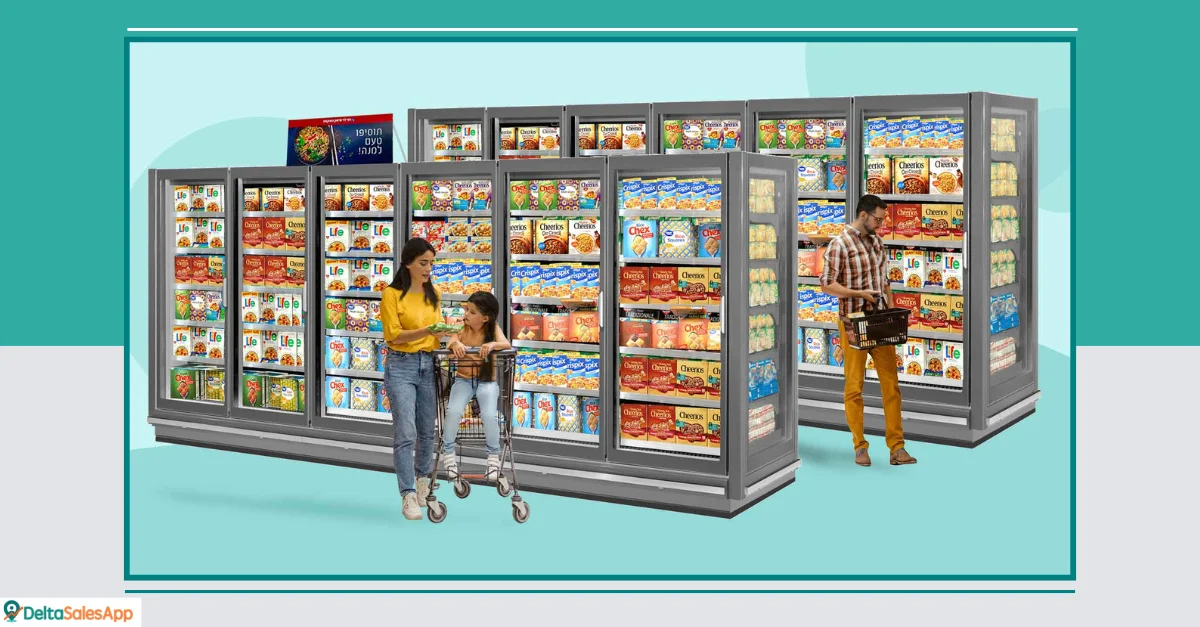
A successful CPG trade marketing strategy hinges on the ability to drive execution in-store while gaining complete visibility into field operations. As CPG companies expand into new markets and categories, their ability to stay agile, informed, and data-driven becomes critical to sustained growth.
Let’s explore how two high-performing CPG organizations—one a global food brand and the other a fast-growing merchandising broker—are mastering their retail presence through smart trade marketing and modern execution platforms.
A Merchandising Team Powered by Execution and Insights
Serving multiple regions across the western United States, a leading merchandising broker has rapidly scaled its operations by integrating technology into the core of its trade marketing approach. Beginning with just five brands, the organization has grown to represent over 20 within a short span. The foundation of this success lies in efficient retail execution and a well-structured CPG trade marketing strategy.
Key to this transformation was their ability to measure field activity in real time. Every in-store action—be it a shelf placement, display check, or price validation—feeds into a centralized system that captures performance across reps, regions, and retail chains. These insights are then shared transparently with brand partners through digital dashboards, allowing them to see how their products are performing on shelves.
This visibility empowers the team to act faster, spot trends sooner, and capitalize on new opportunities. For instance, route optimization has saved significant time for field reps and ensured better territory management. The ease of onboarding and system setup also enabled the team to hit the ground running with minimal disruption.
Moreover, the team was able to stay responsive during periods of high volatility, such as unexpected demand spikes. Instant communication with suppliers and distributors helped them avoid stockouts and resolve pricing discrepancies on the fly, preventing lost sales and improving store-level execution.
What truly stands out is how the merchandising team aligned its operational growth with a platform that offered data clarity and streamlined communication, creating a scalable solution for trade success.
Driving Retail Performance with a Strategic Sales Approach
Another CPG leader, a household name in the food and beverage industry, has taken a different but equally effective approach. Managing close to 100 field sales teams across multiple regions, this organization’s strategy is rooted in fact-based selling and structured field engagement.
Rather than relying solely on long-standing retail relationships, the company built its CPG trade marketing strategy around shelf intelligence, promotional compliance, and consumption trends. Each retail visit is planned with specific objectives—whether it’s fixing a display issue, winning a secondary placement, or replenishing out-of-stocks. Sales reps arrive at stores equipped with data-driven talking points and backup strategies, maximizing their chances of influencing store managers.
The organization focuses on four pillars of execution: Distribution, Shelf, Promotion, and Price. These areas help prioritize rep activities that yield the highest in-store impact. By leveraging data insights from category and execution playbooks, sales reps can speak with authority, positioning themselves as category consultants rather than just product pushers.
The company also ensures that every compliance gap—whether it’s missing products, incorrect pricing, or unexecuted displays—is identified and resolved quickly. This proactive approach has helped elevate product availability, reduce execution gaps, and enhance store-level partnerships.
More importantly, the platform enables deeper engagement with field teams and headquarters. Whether it’s monitoring sales priorities, analyzing promotion success, or sharing best practices, the seamless flow of data keeps every stakeholder informed and empowered.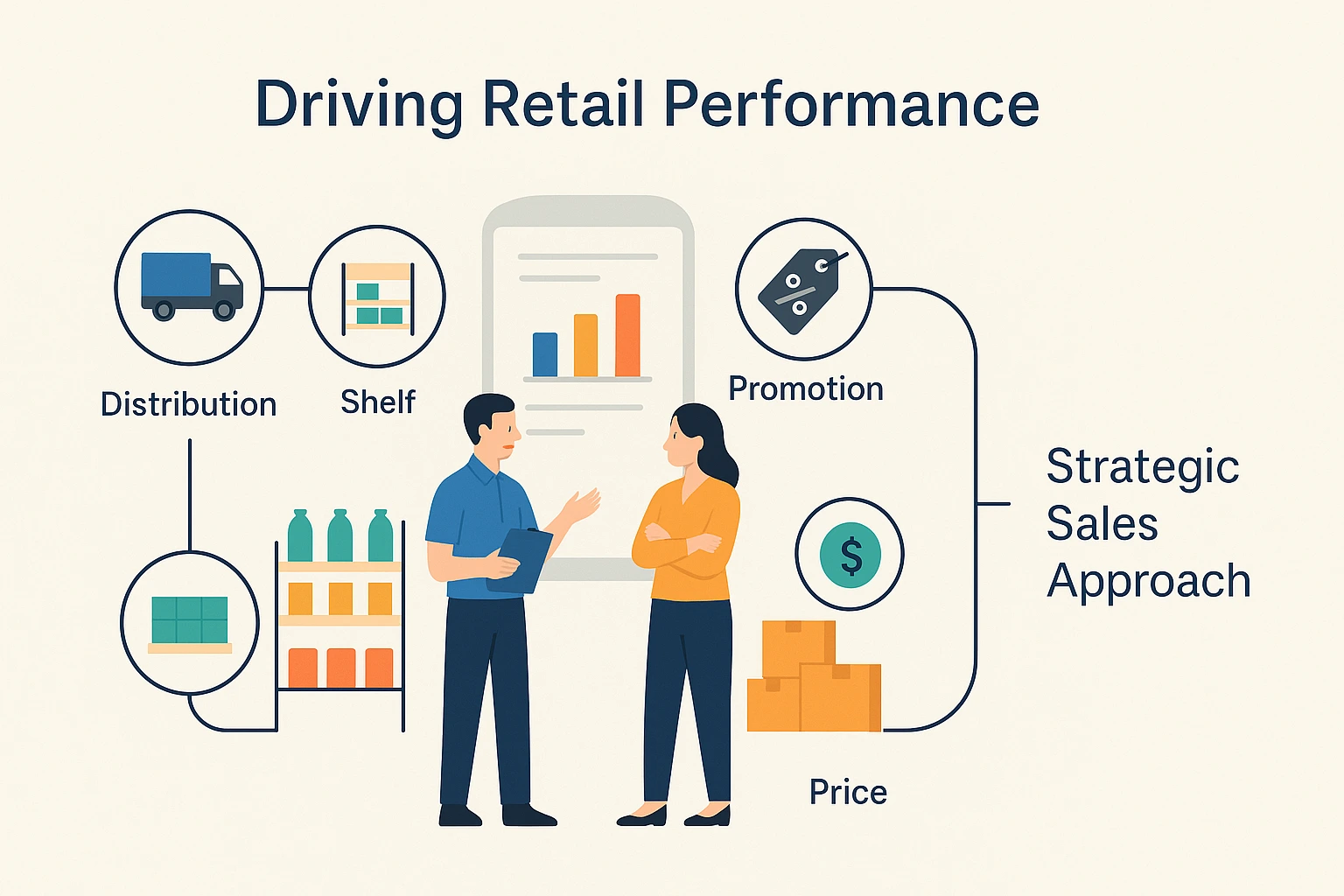
The Takeaway: Smarter Trade Marketing = Better Results
What unites these two organizations is a shared commitment to smarter retail execution, enabled by a strong CPG trade marketing strategy and a modern, mobile-first field execution solution.
By placing data at the center of their trade initiatives, they can:
Identify underperforming stores and SKUs faster
React to market changes in real time
Optimize rep routes and time in-store
Provide brand partners with transparent performance reporting
Elevate conversations with retail decision-makers using credible insights
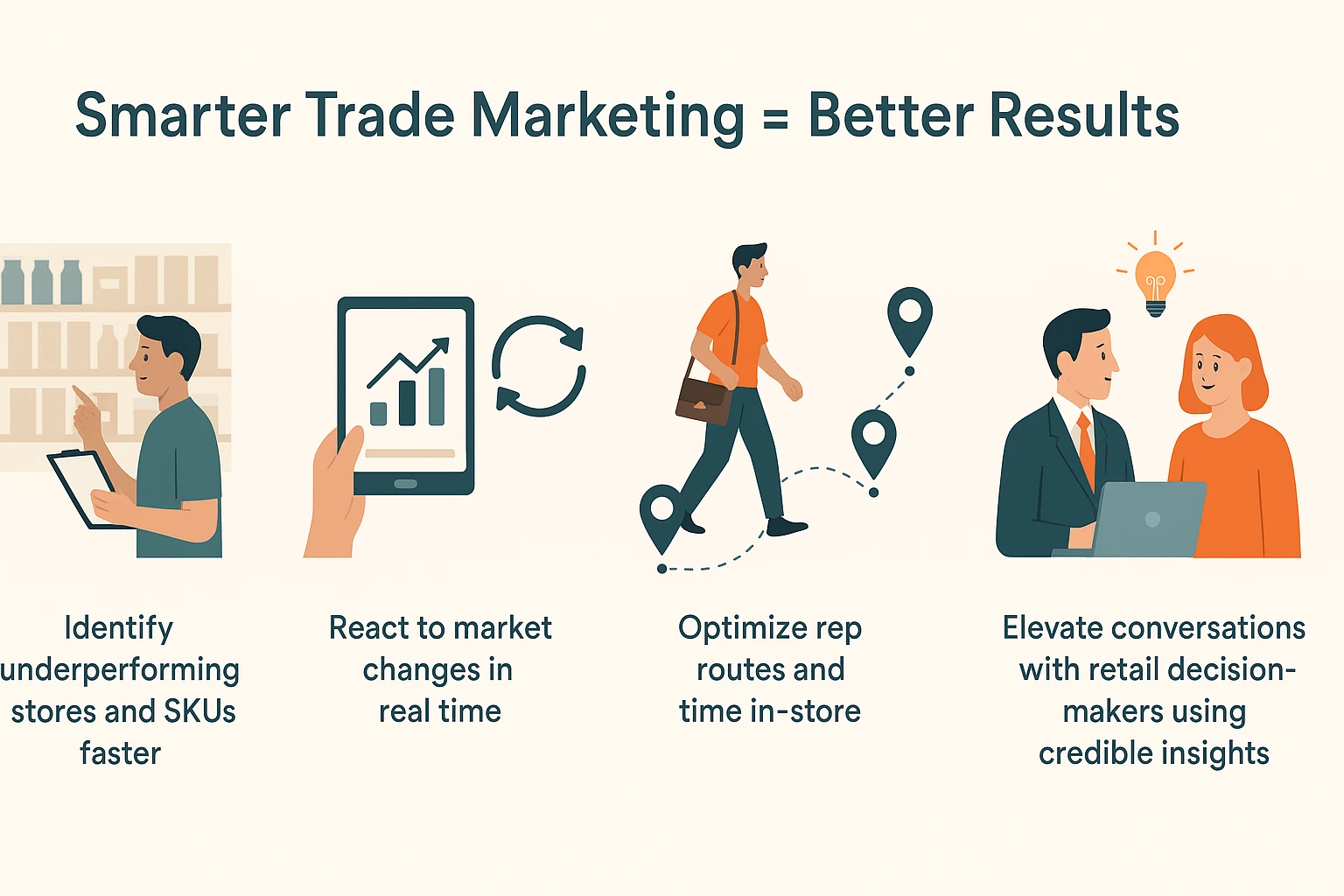
Success in CPG isn’t just about having the best products—it’s about making sure those products are visible, available, and promoted correctly in every store. With a scalable, insights-driven approach to trade marketing, these brands are achieving just that.
Final Thoughts
A powerful CPG trade marketing strategy is no longer optional—it’s a must-have for brands that want to compete at scale. Whether you're managing a national retail network or scaling a regional merchandising team, the right tools and processes make all the difference.
Want to learn how you can take your retail execution to the next level? Stay tuned for more insights, or reach out to explore how top-performing CPG teams are using data to transform field sales.
FAQs: Smart CPG Trade Marketing Strategies
1. What is CPG trade marketing?
CPG trade marketing involves strategies and tactics used by consumer packaged goods (CPG) companies to increase product visibility and sales within retail environments. This includes promotional activities, shelf placements, and in-store execution to maximize brand performance.
2. Why is retail execution important in CPG trade marketing?
Retail execution ensures that products are properly displayed, priced correctly, and stocked consistently across retail locations. Effective execution helps brands maintain product availability, optimize shelf presence, and drive sales growth.
3. How can technology enhance CPG trade marketing?
Modern trade marketing strategies leverage data-driven platforms for route optimization, real-time reporting, and seamless communication between field reps and headquarters. These technologies help companies track performance metrics and respond quickly to market changes.
4. What are the key pillars of a successful CPG trade marketing strategy?
The four primary pillars are:
Distribution - Ensuring product availability across stores.
Shelf - Maintaining optimal product placement and visibility.
Promotion - Executing sales promotions and offers effectively.
Price - Keeping pricing accurate and competitive.
5. How do successful CPG companies use data for trade marketing?
Leading CPG companies use data to monitor store performance, identify gaps in compliance, optimize field routes, and make data-driven decisions for merchandising and promotions. This results in better retail presence and stronger brand relationships.
6. What are the challenges of CPG trade marketing?
Common challenges include managing retail compliance, maintaining consistent product availability, optimizing field rep performance, and reacting to sudden market changes. Effective use of technology and data can help mitigate these issues.
🔍 Also Check
👉 Understanding The Customer Decision-Making Process To Improve Sales
👉 Managing Water Jars in circulation in the market with Delta Sales App
🌟See What Users Say About Us!
Delta Sales App, trusted by businesses for streamlining sales processes and boosting productivity, is highly rated on top review platforms.
See what real users have to say about us:
